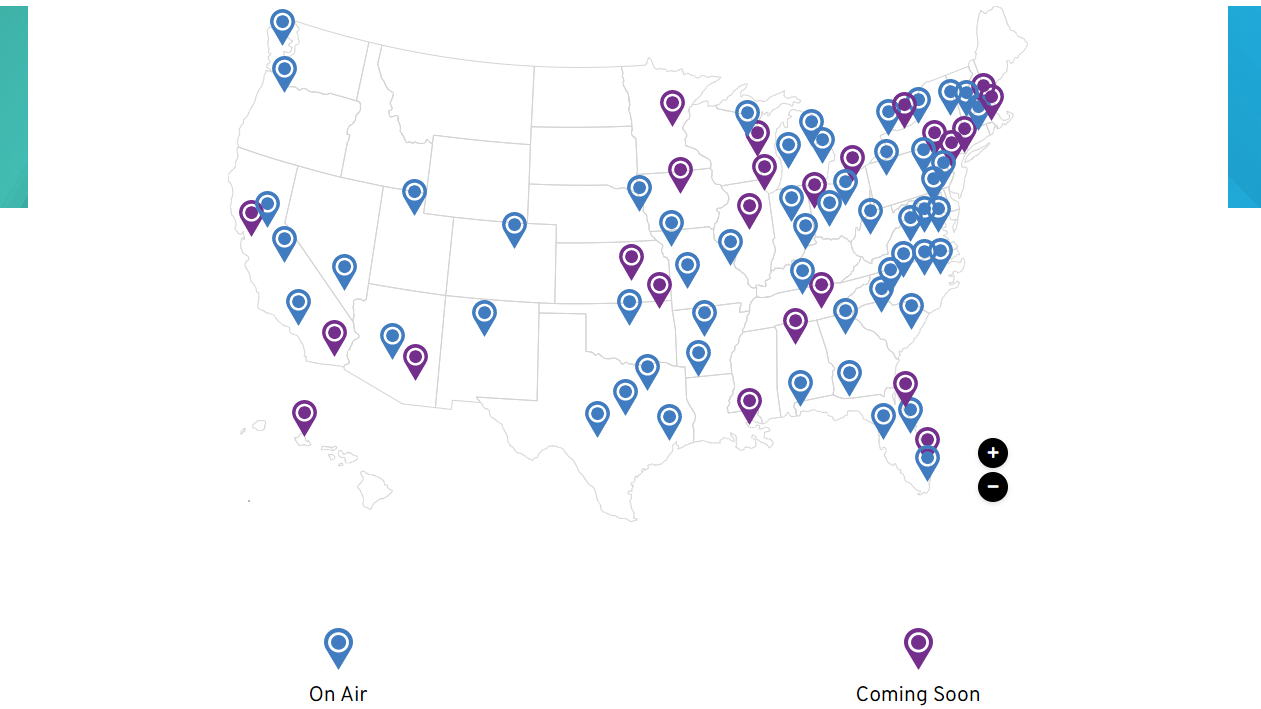The new ATSC 3.0 digital TV broadcasting standard (aka NEXTGEN TV) that’s been made available in an increasing number of US cities continues its steady growth trajectory, with stations in 50-plus markets and reaching 55 percent of households now having been upgraded from the ATSC 1.0 standard.
ATSC 3.0 tuners can be found in select sets sold in the US dating back to 2020, with some of the best 4K TVs from LG, Samsung, Sony, and Hisense all providing the feature. The benefits that ATSC 3.0 brings over the older digital high-definition TV standard include 4K resolution high dynamic range video, Dolby Atmos and DTS:X immersive audio, and Dolby dialogue enhancement and volume levelling features. Also, since it’s IP-based, two-way data-streaming is supported to bring an interactive component to TV shows and sports.
Because it’s broadcast TV with ads, those new features will come free – all you have to do is connect one of the best indoor TV antennas to your ATSC 3.0-compatible set.
But what if your current TV doesn’t have a built-in ATSC 3.0 tuner? Stations that transition to the new broadcasting standard are required to “simulcast” in ATSC 1.0 for at least five years after making the switch. Also, set-top DVRs with ATSC 3.0 tuners that that let you receive and record TV broadcasts and connect to your TV’s HDMI input are available from companies like Tablo. But at around $150, Tablo’s DVR is pricey, and not everyone wants to make TiVo-type recordings of TV broadcasts.
That’s where Pearl TV comes in. The coalition of broadcast TV companies, which counts more than 820 stations among its members, has just announced a FastTrack program to “accelerate development and retail availability of low-cost upgrade accessory receivers.”
The FastTrack initiative was announced last week at the NAB Show New York trade conference run by the National Association of Broadcasters. Noting that the ATSC 3.0 standard is not backward compatible and that 91 percent of US households currently have a TV with an HDMI input but no ATSC 3.0 tuner, Pearl TV’s release makes clear the group’s intent “to provide support to manufacturers interested in making devices that support the full NEXTGEN TV service feature set.”
The devices the group presumably has in mind will be basic set-top or stick-type external tuners that connect to an antenna and can be sold at an affordable price. Such a device would give ATSC 3.0 an opportunity to advance over the next few years as TVs with built-in next-gen tuners become more widely available. (The Pearl TV release also states that “more than 75% of all televisions sold are expected to be available with dual HDTV and NEXTGEN TV reception” by 2024.)

Analysis: Free TV gets a much-needed upgrade with ATSC 3.0
With most streaming services now offering shows and movies in 4K/HDR, regular broadcast TV is starting to look long in the tooth. Yes, when digital high-definition TV first arrived back in the late 1990s, it was an exciting and very welcome advancement over analog broadcasting with its low resolution and reception challenges. But 20-plus years have passed, and there have been a wide range of technical advancements in TV technology over that time.
The main ones are 4K and HDR, both of which work to greatly expand the detail level, color gamut, and visual dynamic range of video images. Both have been readily available to viewers going back to 2016, and are now seen as commonplace.
Immersive audio formats like Dolby Atmos are also available on streaming services, and owners of the best soundbars expect to experience soundtracks in the new, object-based format when watching movies and shows on their TVs.
As for the interactive component of ATSC 3.0, the benefits there are still to be explored, but services like Amazon Prime have started to make interactive features available with its Thursday Night Football streams that show extended stats and other fan-servicing extra content. Sports are a huge draw for broadcast TV, so as more streamers make interactive features available – and they most certainly will – broadcasters will start to appear well out of step.
Of course, all of these broadcast TV shortcomings can be fixed by making ATSC 3.0 widely available, as well as cheaply implemented in sets that lack a next-gen TV tuner. Pearl TV’s FastTrack program is a welcome step in that direction, and one that could greatly speed up the new standard’s success.
from TechRadar - All the latest technology news https://ift.tt/WMCqGyD

0 comments:
Post a Comment